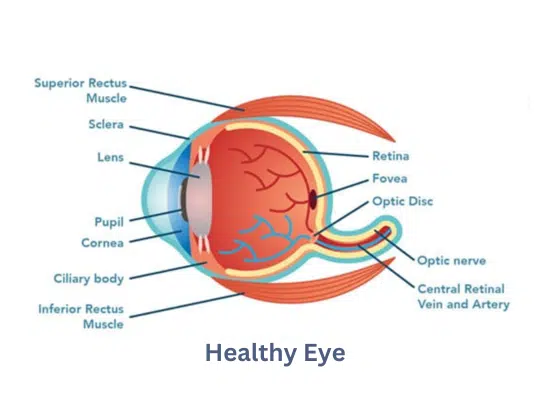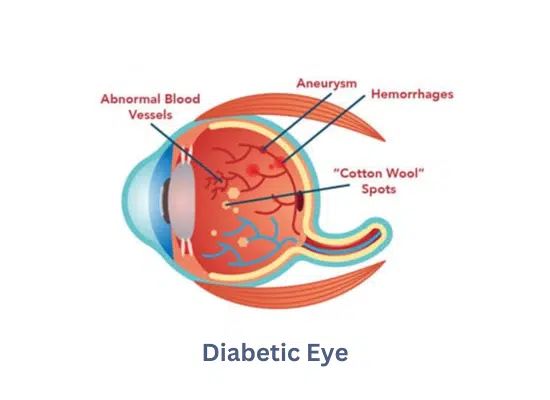The Importance of Routine Eye Exams for Diabetics
Diabetes is a growing disease in America. Almost 96 million Americans are followed for diabetes in 2024. If you are followed for diabetes, your physician will stress the importance of a comprehensive eye examination. This is because uncontrolled diabetes can cause changes in your vision and the development of cataracts. The most severe complication is diabetic retinopathy.
What is Diabetic Retinopathy?
Diabetic retinopathy causes damage to the blood vessels of the retina, which is the back layer of the eye. One in 12 people with diabetics have diabetic retinopathy. Diabetic retinopathy is the leading cause of blindness for people under the age of 60.
Diabetic retinopathy can develop in anyone with type I or type II Diabetes. The longer you have diabetes, the more likely you are to develop diabetic retinopathy. Most often patients will not have symptoms of early diabetic retinopathy. As retinopathy progresses, you may develop blurred or fluctuating vision, floaters (spots in your vision that may appear like black or gray specks, strings, or cobwebs), a quick change in your vision, dark spots in your vision and even blindness.

In this example of how people with normal vision see, there are no visual symptoms of floaters or damaged blood vessels.

This is a simulated example of how someone with diabetic retinopathy may see. As retinopathy progresses, individuals may begin noticing blurred vision, dark spots, and floaters.
Early Diabetic Retinopathy
In early diabetic retinopathy, the walls of the retinal blood vessels are weaker. The small blood vessels will leak fluid and blood into the retina. Large vessels will dilate. As retinopathy progresses, more vessels become blocked causing more blood in the retina. Sometimes, the macula, which is the center of portion of the retina, will develop a buildup of fluid. This will cause a dramatic decrease of the vision.
Severe Diabetic Retinopathy
In severe diabetic retinopathy, new blood vessels will leak into the clear jellylike vitreous which fills the center of the eye. Scarring of the retina can even cause a retinal detachment.


How Eye Doctors Diagnose Retinopathy
It is very important to have a dilation during the eye examination. This means that your eye doctor will instill eye drops to enlarge your pupils. With a slit lamp and other specialized equipment, your eye doctor can thoroughly examine the retina. Photography or scanning may be performed to look for macular or retinal edema. If there is significant fluid or bleeding of the retina, a consultation will be scheduled with a retinal specialist.
Managing Risks
The loss of vision from diabetic retinopathy can be significant. The risk of diabetic retinopathy increases with poorly controlled blood sugars, high blood pressure, high cholesterol and tobacco. Careful management of your diabetes is the best way to prevent vision loss. Is very important to see your eye doctor for a yearly eye examination with dilation, even if your vision is fine. In addition, healthy eating and physical activity are important to control your diabetes.
If you have questions regarding diabetic retinopathy, consult your eye doctor. He or she will advise your physician of the appearance and progression of diabetic retinopathy.

Dr. Tracy Jackson, OD
Dr. Jackson joined Lakeview Clinic in December 2003 and enjoys providing comprehensive eye care for all age groups. She also fits contacts and sees patients for emergency eye care.
